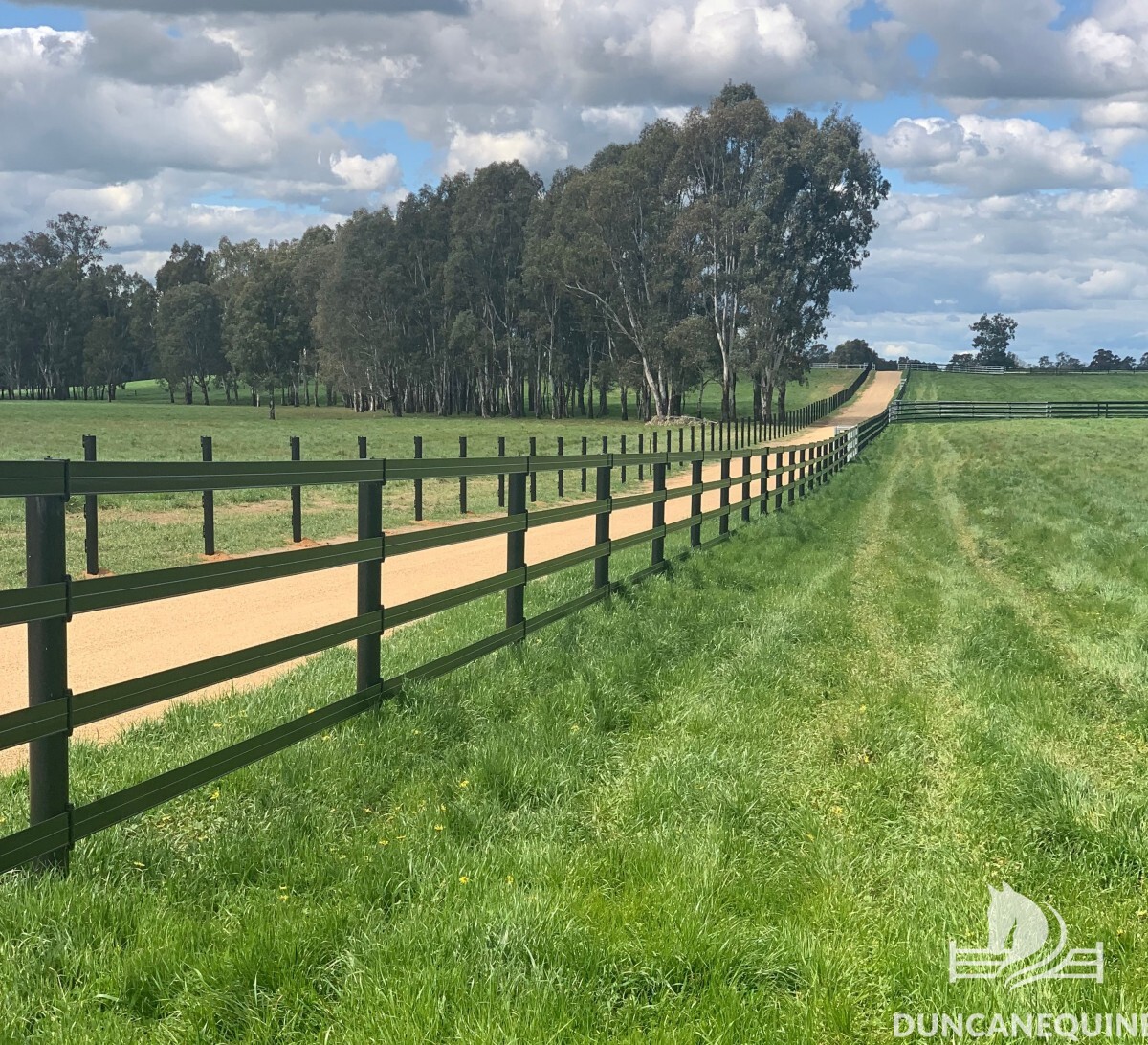When it comes to deciding on installing plastic rails for your horse paddock fencing, there is something you should keep in mind. Not all plastic is created equal. Plastics are divided into many categories, with most of them coming under the term ‘polymer’. There are eight common types of synthetic organic polymers found in households.
These are:
- Low-density polyethylene (LDPE) used mostly for plastic bags
- High-Density Polyethylene (HDPE) used for plastic crates, chemical containers, water bottles
- Polypropylene (PP)
- Polyvinyl Chloride (PVC)
- Polystyrene (PS)
- Nylon
- Teflon (Polytetrafluoroethylene)
- Thermoplastic polyurethanes (TPU)
Most plastic horse fencing products refer to their rail as being made from Polymer. Polymer is a generalized term for plastic. They don’t usually specify which Polymer but it is usually HDPE or PVC.
Duncan Equine Group uses Medium Density Polyethylene (MDPE).

What is Medium Density Polyethylene and why is it different?
Polyethylene itself is a thermoplastic polymer with an extremely large range of applications. There are two other types, the super pliable LDPE and super stiff HDPE. Using very soft pliable plastic for horse fencing means it will stretch and sag. Using super-stiff plastic for horse fencing means it will crack and break easily. As a highly versatile material, the uniquely specific density of MDPE allows it to have a useful balance between the two. Not too soft and not too hard. Just right.
It has many of the same strength characteristics of HDPE including great impact resistance, but it also retains the excellent flexibility of LDPE. The combination of these attributes means that it can be used for things like coating heavy cables and water tanks.
As well as sharing the insulation resistance of most plastic materials MDPE also has a higher resistance to heat and better stress cracking resistance and notch sensitivity. (Notch Sensitivity is defined as how easily a single crack, scratch or notch in a material can widen into a serious fracture, affecting its overall integrity).
When shopping around look at the plastic used
So, when looking at different flexible rail fencing options for your horse property, make sure you take into serious consideration the actual type of plastic (polymer) used in the product. Many of our competitors do not state the actual type of polymer used or use High Density (High Tensile) polymer or PVC. These just don’t have the same strength or longevity as the products used by Duncan Equine Group. You want your fencing to be safe as well as last for years, you definitely want to choose Medium Density Polyethylene. It will outlast the other products in the Australian conditions; it will be soft enough to absorb impact without cracking or splintering and will be virtually maintenance-free. The initial cost will save you money in the long run.




